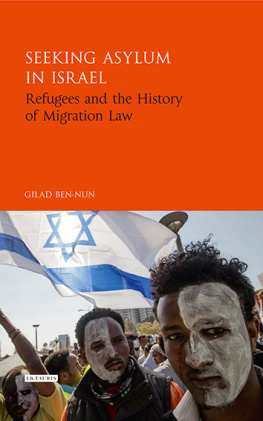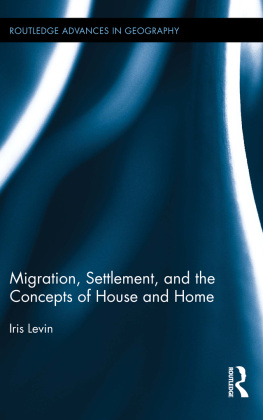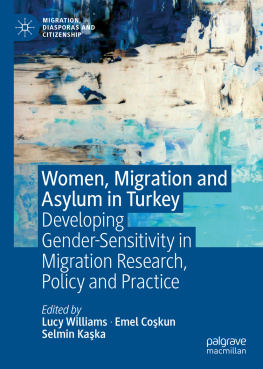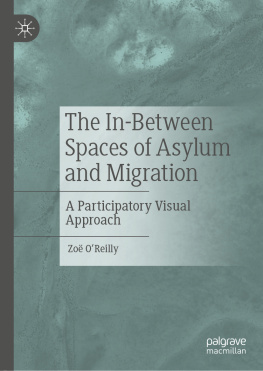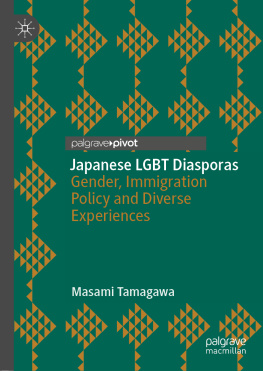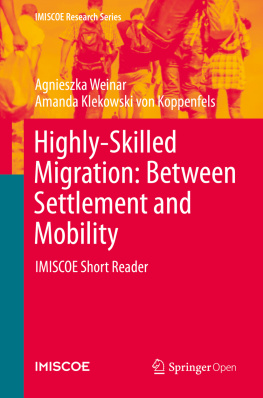INHABITING BORDERS, ROUTES HOME
Studies in Migration and Diaspora
Series Editor:
Anne J. Kershen, Queen Mary, University of London, UK
Studies in Migration and Diaspora is a series designed to showcase the interdisciplinary and multidisciplinary nature of research in this important field. Volumes in the series cover local, national and global issues and engage with both historical and contemporary events. The books will appeal to scholars, students and all those engaged in the study of migration and diaspora. Amongst the topics covered are minority ethnic relations, transnational movements and the cultural, social and political implications of moving from over there, to over here.
Also in the series:
Second-Generation Transnationalism and Roots Migration
Cross-Border Lives
Susanne Wessendorf
ISBN 978-1-4094-4015-4
Cultures in Refuge
Seeking Sanctuary in Modern Australia
Edited by Anna Hayes and Robert Mason
ISBN 978-1-4094-3475-7
Whiteness and Postcolonialism in the Nordic Region
Exceptionalism, Migrant Others and National Identities
Edited by Kristn Loftsdttir and Lars Jensen
ISBN 978-1-4094-4481-7
European Identity and Culture
Narratives of Transnational Belonging
Edited by Rebecca Friedman and Markus Thiel
ISBN 978-1-4094-3714-7
Migration, Citizenship and Intercultural Relations
Looking through the Lens of Social Inclusion
Edited by Fethi Mansouri and Michele Lobo
ISBN 978-1-4094-2880-0
Inhabiting Borders, Routes Home
Youth, Gender, Asylum
ALA SIRRIYEH
School of Social and International Studies,
University of Bradford, UK
First published 2013 by Ashgate Publishing
Published 2016 by Routledge
2 Park Square, Milton Park, Abingdon, Oxon OX14 4RN
711 Third Avenue, New York, NY 10017, USA
Routledge is an imprint of the Taylor & Francis Group, an informa business
Copyright Ala Sirriyeh 2013
Ala Sirriyeh has asserted her right under the Copyright, Designs and Patents Act, 1988, to be identified as the author of this work.
All rights reserved. No part of this book may be reprinted or reproduced or utilised in any form or by any electronic, mechanical, or other means, now known or hereafter invented, including photocopying and recording, or in any information storage or retrieval system, without permission in writing from the publishers.
Notice:
Product or corporate names may be trademarks or registered trademarks, and are used only for identification and explanation without intent to infringe.
British Library Cataloguing in Publication Data
Sirriyeh, Ala.
Inhabiting borders, routes home : youth, gender, asylum. (Studies in migration and diaspora)
1. Political refugees--Europe--Psychology. 2. Immigrant youthEuropePsychology. 3. Political refugeesEuropeSocial conditions. 4. Immigrant youthEuropeSocial conditions. I. Title II. Series
305.906914-dc23
The Library of Congress has cataloged the printed edition as follows:
Sirriyeh, Ala.
Inhabiting borders, routes home : youth, gender, asylum/by Ala Sirriyeh.
pages cm. (Studies in migration and diaspora)
Includes bibliographical references and index.
ISBN 978-1-4094-4495-4 (hardback: alk. paper) ISBN 978-1-3155-8855-1 (ebook) ISBN 978-1-3171-1667-7 (epub) 1. Women illegal aliensGreat BritainSocial conditions. 2. Women immigrantsGreat BritainSocial conditions. 3. Young womenGreat BritainSocial conditions. 4. Great BritainEmigration and immigrationSocial aspects. 5. Great BritainEmigration and immigrationGovernment policy. I. Title.
JV7684.S57 2013
305.484120941dc23
2013014524
ISBN 9781409444954 (hbk)
ISBN 9781315588551 (ebk-PDF)
ISBN 9781317116677 (ebk-ePUB)
For my grandmother Amina Sirriyeh
Contents
List of Figures and Tables
Figures
Table
Series Editors Preface
Inhabiting Borders, Routes Home
The transition from young teenager to mature adult is one which is accompanied by a diversity of experiences and landscapes, some pleasant, some less so. It can be a hard journey to travel for the secure and confident youngster, nurtured and protected by family and surrounded by the familiar. How much more so, for the deracinated young refugee or asylum seeker, who faces the future in a foreign land, all too often without the comfort and support of kith or kin and without the security of home. It is the life journeys of young, refugee and asylum seeking girls/women, and their constructions and interpretations of home in alien surroundings, which provide the theme of this book. As the author explains, it is a volume which concentrates solely on the female, as her earlier work, which incorporated both genders, had highlighted significant gendered differences and the need to explore these gendered differences in depth.
The meaning of home is not easy to define; it has a multiplicity of connotations and arouses an array of emotions. For some young refugee women it was the push factor, a place of subjugation and exclusion where they lived out their hidden and other lives in fear. For others it was a place once filled with laughter and sunshine, which turned into a nightmare in which exodus became the only means of survival. For many of the young transnational actors in this book, home became a fusion of myths accumulated in a remembered landscape which may itself be more imagined than real. As Ala Sirriyeh describes, for some the abrupt interruption that was forced migration brought freedom, for some a sense of bereavement, and for others still, a confusion of the two. Yet home is not only the private place, one where being is played out behind closed doors, it is also a public space where life is performed on a familiar stage. As the author illustrates so vividly in this volume, in contrast to what they experienced before, young asylum seekers and refugees are forced to act out their transitional life journeys on unfamiliar private and public stages.
In reading this book we discover how the young female refugees and asylum seekers, now located in West Yorkshire, attempt to construct/reconstruct home whilst making the journey from childhood to adulthood. It is their recorded narratives which illuminate the reality of their hardship and, indeed, bravery, in creating new lives in an alien, and at times, hostile, society. We learn of the stress of shared accommodation and the lack of personal, private space, and the tension created whilst waiting for the award of refugee status, the granting of which would enable them to plan ahead and establish a proper home: a home which would provide a secure bridge from the past to the future; a space which might be a replica of that left behind or a template for tomorrow. For the young female refugee the process of creating that home necessitates negotiation in a foreign landscape and an acceptance of the trials that lie ahead. By gaining an insight into the personal histories of the 23 actors in this impressively researched and theorised book we get a sense that, having overcome the past, in time these young women will surmount the challenges of the future and take their place as mature and responsible adults in their new home.
Anne J Kershen
Queen Mary University of London


